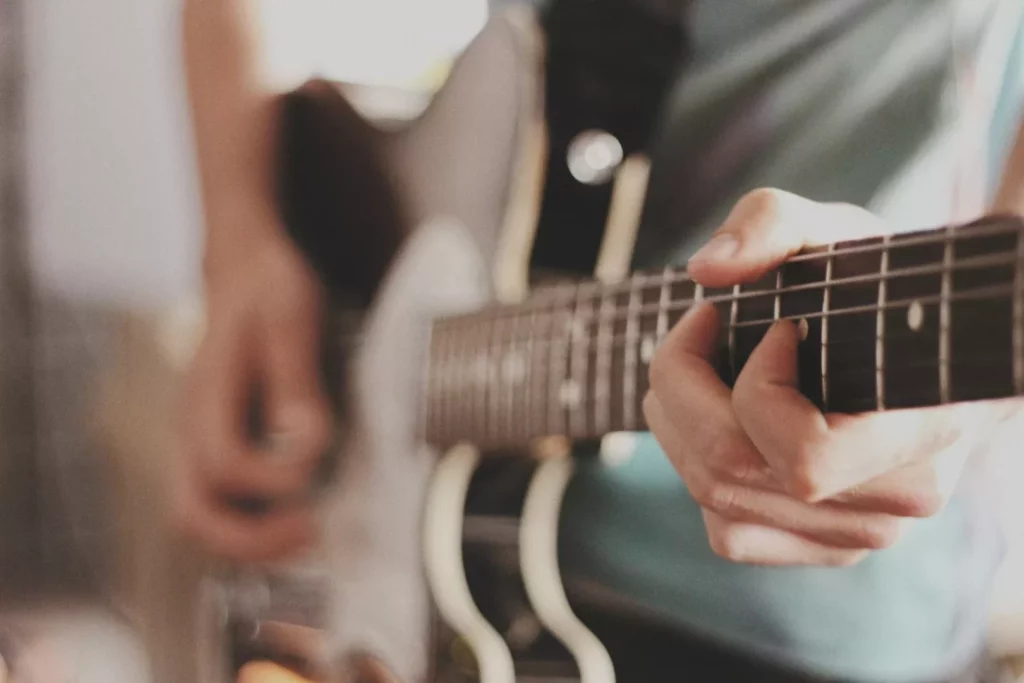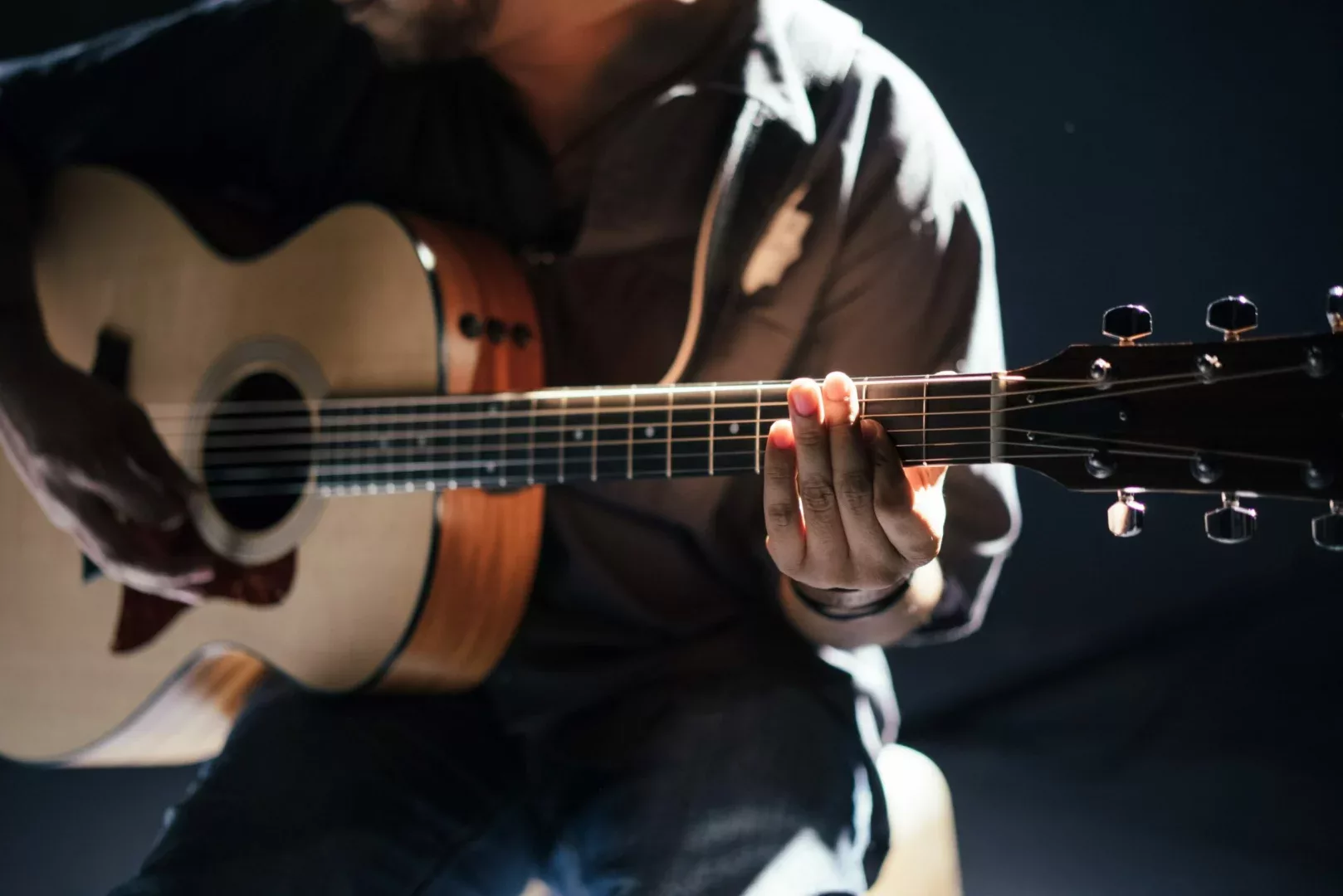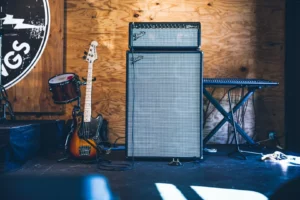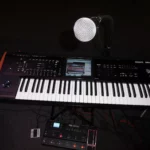There are many beginner guitar exercises and scales that can help you develop your guitar skills. Today we look at just a few examples that can start learning today.
Developing a practice routine will help you to increase your skills day by day, and playing these exercises, scales, and chords will help you master the fundamentals of guitar playing.

You may find it useful to have a beginner guitar book to learn your fundamentals such as scales and chords. One popular guitar book on Amazon is:

The Best Beginner Guitar Exercises and Scales
Contents
Best Beginner Guitar Exercises
Playing simple exercises that focus on strengthening individual fingers and improving coordination can help you develop your technique.
One common exercise is to play four-finger patterns, starting with your first finger on the first fret, then playing the second finger on the second fret, third finger on the third fret, and fourth finger on the fourth fret.
Playing back and forth between these first 4 notes will help you to develop your finger strength. Try alternating between semi-tones (one fret space) and tones (two fret spaces) between each finger.
In this way, you can work out where other notes are in relation to the first open string (E).
Pentatonic Scales
You can also try playing scales and arpeggios in different keys to practice moving your fingers smoothly and quickly across the fretboard.
Starting with Pentatonic scales and major scales, and then moving to minor and blues scales, is a popular way to go about this.
Try to learn your pentatonic scales in the 5 different shapes by following the tab chart shown below. Notice the strings are shown on the left of the graph.

Arpeggios
Arpeggios are a type of broken chord where the notes are played or sung in sequence, one after the other, rather than ringing out simultaneously.
They are essential for understanding the structure of chords and can add variety and sophistication to your guitar playing.
To play an arpeggio on the guitar, you first need to know the notes that make up a chord. For example, a C major arpeggio would include the notes C, E, and G.
You can also play the C an octave above the first one you played, to round out the full arpeggio.
Start by playing these notes one at a time, in order, from the lowest to the highest, and then back down.
Practice this slowly at first, then gradually increase your speed as you become more comfortable. The key to smooth arpeggios is consistent practice and good technique.
Open Chords
Open chords are chords that use open strings and are some of the easiest chords to learn. These chords include G, C, D, E, and A.
You should practice changing between these chords smoothly and cleanly. Once you have mastered these, you can move on to some slightly harder chords, with extensions such as 7ths added, to give a bluesy sound.
More Guitar Chords
The diagram below has all of the Major, Minor, and Dominant 7th chords for you to learn. Take your time and learn these slowly to build up your repertoire of chords.
These will all come up frequently in many popular songs, and learning your chords in all keys will be your first step on the way to guitar mastery.

Strumming Patterns
Strumming patterns are rhythmic patterns used to play chords. There are many different strumming patterns to choose from, but some good ones for beginners include the down-up strum, the down-down-up strum, and the bass-strum pattern.
Start by practicing a few basic strumming patterns, such as downstrokes only, alternating down and upstrokes, and more complex patterns involving skips and accents.
Power Chords
Power chords are simple chords that are commonly used in rock music. They are played using just two or three fingers and are a good way to start learning how to play the lead guitar.
Power chords are often used in songs by bands like AC/DC, Nirvana, and Green Day.
They are relatively easy to play and can give your music a powerful, full sound. Start by learning the basic shape of a power chord and practice moving it around the fretboard
Beginner Songs

Practicing songs is a fun way to apply the skills you’ve learned. Start with simple songs that use the chords and strumming patterns you’ve been practicing.
As you get more comfortable, you can start tackling more complex songs. Here are eight popular beginner guitar songs across various genres:
- Take Me Home, Country Roads by John Denver
- Sweet Home Alabama by Lynyrd Skynyrd
- Boys ‘Round Here by Blake Shelton
- Seven Nation Army by The White Stripes
- Ocean Pearl by 54-40
- Play That Funky Music by Wild Cherry
- Just the Way You Are by Bruno Mars
- Love Me Do by the Beatles
- Brown Eyed Girl by Van Morrison
- Bad Moon Rising by Creedence Clearwater Revival
Many of the chord charts for these popular songs, and many more, can be found on ultimate-guitar.
Tuning by Ear
In standard guitar tuning the notes of the guitar from thickest to thinnest are E, A, D, G, B, E.
You should practice tuning your guitar by ear once you know the notes of each string that you are listening for. It can help to have someone teach you this first or to use an automatic tuner.
Getting used to tuning your guitar will help to train your ear and quickly tune your guitar before performances on your own without an automatic tuner.
How to Practice Guitar?
Establishing a consistent practice routine is crucial for mastering the guitar. Aim to practice at the same time every day to build a habit. Your practice session should include warm-up exercises, finger drills, practicing chord progressions, and scales.
Technique drills can help improve your accuracy while learning songs can enhance your musicality. Don’t forget to include ear training, improvisation, and basic music theory in your routine.
The goal is not just the duration of your practice, but the quality and focus you bring to it. Lastly, ensure to maintain your guitar properly to keep it in top shape
Learning to play the guitar is a journey that requires practice, dedication, and a love for music.
The key to mastering the guitar is consistent practice and enjoying the process as much as you can, so be in control of your musical journey and make it as easy as possible for yourself.
How to Practice Guitar Scales
Practicing guitar scales is a fundamental part of improving your guitar skills and understanding music theory. Start by familiarizing yourself with the basic scales, such as the Minor Pentatonic, Major, Major Pentatonic, and Minor Scales.
These scales form the foundation of most music for guitarists. When practicing, start slow and focus on accuracy before gradually increasing your speed.
Major and Minor Scales sound very different, (major sounds happy and minor sounds sad), and you should learn them by ear as well as with muscle memory and pattern recognition.
Knowing the individual patterns on the guitar fretboard for each major and minor scale will be a huge leap forward in your fundamental guitar understanding and abilities.
Additionally, it is good to know that each Major Scale corresponds to a specific Minor Scale, forming relative scales.
Understanding chord/scale theory and harmony is also a useful skill and will help you to understand music whilst you are learning the instrument.
Incorporate various exercises, patterns, and sequences into your daily practice routine to enhance your understanding and mastery of these scales.
How to Practice Guitar Effectively
Effective guitar practice involves more than just playing your instrument; it requires a structured approach and clear goals. Start with a warm-up exercise to prepare your fingers and hands for practice.
Incorporate various exercises into your routine, including scales, single-line melodies, sheet music reading, ear training, and chords.
When practicing chords, start slowly, perfect the clarity of each note, and then focus on smooth transitions between chords.
Use a metronome to help with timing and rhythm. Aim to practice in a distraction-free environment and schedule specific practice times, ideally for at least five days per week.
How to Practice Guitar with a Metronome
Practicing guitar with a metronome is crucial for improving your timing and rhythm. Start slow and prioritize accuracy over speed.
As you become more comfortable, gradually increase the tempo. Be mindful to listen to the metronome and avoid playing ahead or behind the beat.
Regular practice with a metronome can help you progress faster and play with a better rhythm.
How To Practice Guitar Quietly Without Disturbing Others
Practicing guitar quietly is essential when you want to avoid disturbing others.
For electric guitars, consider using headphones with your amp or pedals, or practice without an amp using a battery-powered mini-amp or a modern multi-effects pedal with a headphone output.
For acoustic guitars, techniques such as dampening the sound with a soft object like a T-shirt or a sponge under the strings near the bridge, using feedback dampeners, or considering a silent travel guitar can help reduce the sound.
Also, exploring fingerings, pitch, finger, and grip strength exercises can contribute to a quieter practice session.
Best Beginner Guitars
If you are looking to purchase your first beginner guitar, you can find some of the best options in 2023 by reading the following articles:
Best beginner electric guitars (2023)
Best Acoustic Guitars for Beginners
Related:
How long to learn the guitar? (and Beginner Exercises)
Also, check out the 2 books below that can help you on your journey to mastery of the guitar.


Conclusion
Remember, it’s important to start slowly and gradually increase your speed and complexity as you become more comfortable with the exercises.
Always focus on playing with good technique and accuracy, rather than speed or volume. And most importantly, have fun and enjoy the process of learning to play the guitar!








thank you so much sir this is very good artcile